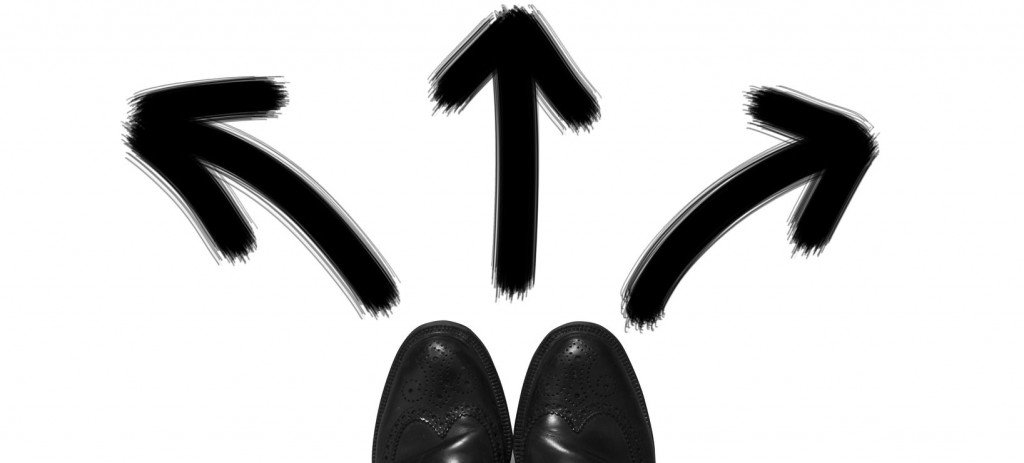Rick Kirschner, ND
As naturopathic physicians, we aim to help people restore and maintain their health. This usually involves making at least a few lifestyle changes, because such changes deliver positive health benefits that last a lifetime. But to get these changes to happen, we must have a useful understanding of habits, including how we make them and what processes are involved in changing them. I believe that having the knowledge and ability to help someone change a habit is a core competency of a successful practice. Habit change certainly served as the foundation of mine.
Early on, I noticed that many of my patients readily and naturally made choices that were in their own interest and for their own benefit, while others moved slowly and reluctantly, if at all, towards meeting their own health objectives. Some of my patients were highly motivated, with clear direction fixed firmly in their minds. With only a little coaching to acquire necessary knowledge and skills, they gained choice, made changes, and then sustained those changes faithfully without my having to stay involved.
Other patients, however, did little to take charge over their lives. They might give lip service to the idea of a life worth living, but then talk about it as if it was up to someone else. I watched as they waited, helplessly hoping for someone else to fix what wasn’t working in their lives.
I thought this was an interesting difference, and I set out to understand it. How is it possible that that some people changed the automatic side of their lives in meaningful ways, while others would not, could not, or simply did not? And that’s when something unexpected revealed itself to me. I found that in either case, the same basic behavioral patterns were in place, but they were producing very different results! The real difference was how people were using them.
In this article, I will share with you some of my observations about the behavioral patterns that create positive change, and offer you a simple yet robust approach for successfully using the patterns of change to help your patients get their health back.
Understanding how habits get made is a necessary step if you want to create alternatives to existing habits that work better in support of your patient’s goals and ambitions, or your own. In other words, a good set of skills for facilitating habit change is essential to hacking the habit code to create smarter and better habits. I’m not saying I have a perfect system to do this. But I’m certain you can improve your results in getting habits to change if you understand what I’m about to share with you.
We Are Creatures of Habit
Have you ever had the experience of driving to work, but when you arrive you have no actual recollection of driving? This speaks to our remarkable ability to automatically suspend thought when we already know what to do, when, where, and how to do it. Indeed, we automate as much of our lives as possible, in order to keep our attention free to respond to the moment. These automatic behaviors are like software programs – sequences of code that start outside of our conscious awareness, and then run to completion, all without effort or thought. To regain our capacity to influence what we think and do automatically – to hack that code – we need to bring our habitual nature into the bright light of conscious thought.
So let’s begin our examination of habit change with what I consider to be the most useful assumption about the habits of the people I work with: When it comes to unconscious and automatic behavior, people always make their best choice (even if their best choice is a terrible one!). That means that people tend to do what they do for good reason, and they are unlikely to change a habit unless they can identify and recognize a better way that serves their purpose.
I like to think of a habit as a behavioral generalization rooted in the timeline of our lives. Changing them sometimes requires that we become time and space travelers, visiting the past, the present and the future, where we can step into or out of behaviors, try them on in order to learn if there are other choices that can work better than an existing habitual choice. I also like to think of change as something that happens in stages.
Change Happens in Stages
Change rarely happens as a giant leap from old to new. More likely, it happens in stages:
- According to the “stages of change” model developed by James Prochaska, PhD, the first stage of change is IGNORANCE. That’s where people don’t know what they don’t know. They don’t know what to do. Or, they don’t know how to do it. Or, they don’t know why it matters.
- Habit change begins in earnest when a person arrives at the second stage of change: RECOGNITION. This is the “ah-hah” moment, in which needs, motivations, and options become conscious, information becomes available, or resources become accessible.
- The third stage of change is PLANNING, in which you determine specifically what you want to do and how you want to do it.
- The fourth stage is ACTION, where you take a step forward, evaluate it for effectiveness, then take the next step, and so on.
- The fifth stage of change is REPETITION. In fact, habits become automatic through repetition and intensity, so doing something differently over and over with purpose and intention locks it in to our nervous system where it can become unconscious and automatic.
The Power of Association and Dissociation
The behavioral generalization of a habit is initially built using 2 mental processes: Association and dissociation. Association is when your mind connects one thing to something else. Dissociation is when your mind disconnects one thing from something else. Sweet dreams are made of these. So are our memories. We use these 2 processes to build the beliefs and behavioral patterns that become the basis of our automatic lives. And they are powerful. We can associate positive feelings to a bowl of cereal, or terror to the sight of a closet door. We can associate being resourceful with problem emotional states, or associate problem emotional states with bad choices. It really is up to us, but most people don’t realize how true this is. Knowing how this works has empowered me as a doctor, a friend, a husband, and a father, to introduce new elements into old patterns in order to create health and healing instead of dis-ease and deterioration.
FREE ASSOCIATION is a method developed by Sigmund Freud and used in psychotherapy to get at unconscious associations. In free association, you just say whatever comes into your mind without censoring it. I say apple pie and you say mother. I say tree and you say forest. I say Mozart’s Requiem, and you say Bon Jovi’s Slippery When Wet. But there are other ways to surface unconscious associations. My favorite method is to listen actively, asking specific questions that go past the surface structure of what people say into the associations behind what they say. Another method is to ask people to close their eyes, drift back in time to the beginning of a pattern, and find the associations and dissociations (MEMORIES) there. Two of the most powerful associations in a habit are the trigger for the habitual pattern and the reward that follows.
I remember one patient who had the strangest response to messages of encouragement and support. He would feel good for a brief moment, then suddenly look confused, and start to feel bad. Then he would decline the affirming message I was trying to give him. Get the pattern? Feeling good was the trigger for feeling bad. I helped him to notice this pattern by bringing it into his awareness (IGNORANCE à RECOGNITION), and then I asked him to go back in time to his earliest memory of this pattern.
Many of our habits happen in context – those times and places in which the habit occurs. And for this patient, the context for the habitual pattern was feeling good about himself. Whenever someone says or does something that validates his existence, he starts to feel good about himself (the trigger association), and the habitual pattern is to immediately feel bad about himself, which moves him to disclaim any good being offered (DISSOCIATION).
Sounds crazy? Yes, it does. And yet, it makes perfect sense… which is true about most of our habits, once uncovered and explored. For this patient, the pattern was formed in his childhood. Turned out that any time he felt good about something as a child, maybe doing well at school, or someone inviting him over or including him, this triggered his father into an aggressive behavioral response: Seeing his son happy (the TRIGGER), he would automatically beat or berate his son. Yet when my patient felt bad as a kid, his father was less aggressive towards him, and might even leave him alone (the REWARD). So, my patient learned to turn a good feeling into a bad one in order to protect himself from his father. Then he grew up. The pattern outlived its usefulness, yet continued on.
Obviously, the response to a trigger association can consist of a chain of associations. This may be familiar to you as the chain of feeling bad about feeling bad about feeling bad, or, being disappointed, getting angry, then saying or doing something rash or petulant. But if you can introduce a new association into that chain of associations, you can have an impact and make a difference. If the patient recognizes the predictability of the pattern, that might be enough to introduce a new distinction and produce the ah-hah of recognition. In fact, that’s what happened.
I noticed the pattern and reported it back to him. I had offered him a next step regarding a health problem, and followed it with an encouraging, “You’ve got this. You can do it!” And his response was, “I doubt it. You’re just saying that because it’s your job.” So I said, “Did you notice what you did there? I offered you an encouraging message, and you liked it; it felt good. And then right after that, you felt bad, didn’t you!? And then you pushed my words away. Is that pattern familiar to you? Feel good about yourself, then feel bad about feeling good about yourself, and then reject whatever made you feel good about yourself? Does that pretty much describe what just happened?”
I think it shocked him to notice it. And he laughed at how ridiculous it sounded. When he laughed, I paid him a compliment. “It’s great that you have a sense of humor about it!” He smiled, then look confused, then sighed. I said, “Oops, you were feeling good. Must mean it’s time to feel bad about that.” He laughed harder. We did this a few times and before too long, the laugh became his new response to feeling good. Once he was able to consciously recognize the pattern, he dissociated from it, and created a new association and a new result. And thus we proved the adage that laughter really is good medicine! My patient learned to associate laughter with feeling good. And inserting his laugh into the sequence of associations was all that was needed to change the pattern, to derail the associations that normally followed. A little repetition and intensity sealed it into his nervous system.
The Anatomy of a Habit
A habit is a behavioral generalization, with roots in the timeline of a person’s life. It consists of a trigger followed by a sequence of associations and dissociations, and reinforced by repetition and reward until it becomes automatic. Rewards can be something undesirable stopping, or something desirable starting or continuing. Healing occurs when we use the processes of association and dissociation intentionally and wisely.
To change a habit, you can bring the unconscious program into the light of conscious awareness, then examine it closely to uncover when it began, how it began, when it occurs, how it is a problem, and what is a preferred replacement habit. That last bit is important, because nature hates a vacuum, and you can’t replace something with nothing. If you want something to stop, you need to know what you want to start in its place.
What you learn about a habit will provide you with opportunities to introduce new distinctions into the chain of events. And sometimes, just examining it introduces new distinctions that change it.
I recall a conversation with one of my classmates at a convention some years ago. He wondered if I had any mind/body tricks for insomnia. “You have insomnia?” I asked. He nodded. “Tell me about it! What happens?” He told me, “I lay down to go to sleep, and I can’t.” I asked, “Well, what do you do while you’re laying there unable to sleep?” He had to think about that, as the answer wasn’t consciously known to him. After a few moments he said, “I lay there and talk to myself.” “What kinds of things do you say to yourself?” I asked. “I tell myself to go to sleep, that it’s late, that I have a lot to do the next day.” I nodded, then asked, “When you’re talking to yourself, what does that voice in your head sound like? Can you demonstrate it for me?” He did. And it sounded really angry, urgent, intense! And I had the thought that, if I was trying to sleep and someone was yelling at me, I might have insomnia too! He had associated this intense voice to the act of trying to sleep.
I immediately recognized the opportunity to make a new distinction and insert it into the sequence of associations. I said, “I wonder what would happen if that voice in your head said all the same things, but said them lovingly, soothingly, encouragingly?” He looked at me like that was ridiculous. I said, “Maybe you could just close your eyes and try that right now, and tell me what happens?” So he did. And he fell asleep right in front of me.
So here’s something interesting: I’ve observed that some people use this trigger/association/dissociation process/reward pattern to create positive change in their lives. Take depression, for example… In my experience, happy people associate with positive experiences, dissociate from negative experiences. They associate with feeling resourceful, dissociate from self-doubt. They associate their desired outcomes with actions they can take, and they associate their actions with positive internal messages of encouragement. But this same box of tinker toys is used by unhealthy people to create unhealthy outcomes. Depressed people associate with negative feelings and dissociate from positive ones, lock themselves away with limiting assumptions and an old story that casts them in a negative light. Where a healthy person is flexible and adaptive to change, the unhealthy person digs in their heels on positions they take, and holds on to old grievances instead of learning from them. And they dissociate from positive feelings, like happiness, curiosity, and creativity.
In Part 2 of this article, we’ll explore the 3 kinds of habits that we can change, and how to design change with each of them.
 Rick Kirschner, ND is a speaker, educator and coach. A 1981 graduate of NCNM, he is a long-time faculty member with the Institute for Management Studies, and a thought leader with Athena Interactive and CanDoGo. Rick joined the board of the AANP in 1989, and served the association as the first chair of public affairs. He created the AANP’s original brand identity online, and served as webmaster from 1996 to 2000. He also helped launch the successful drive for naturopathic licensure in California, with a presentation before the Department of Consumer Affairs. From 2006-2013, Dr Kirschner developed and taught his Healthy Communication Workshop to incoming freshmen at SCNM. Dr Kirschner is the author or coauthor of 9 books, including the international bestseller, Dealing With People You Can’t Stand: How To Bring Out The Best In People At Their Worst. He has also delivered his ideas and advice on communication, persuasion and conflict resolution in thousands of radio and television appearances, newspaper and magazine articles, and interviews, from CNBC to CBC to FOX to the Wall Street Journal, USA Today, London Times, and Readers Digest.
Rick Kirschner, ND is a speaker, educator and coach. A 1981 graduate of NCNM, he is a long-time faculty member with the Institute for Management Studies, and a thought leader with Athena Interactive and CanDoGo. Rick joined the board of the AANP in 1989, and served the association as the first chair of public affairs. He created the AANP’s original brand identity online, and served as webmaster from 1996 to 2000. He also helped launch the successful drive for naturopathic licensure in California, with a presentation before the Department of Consumer Affairs. From 2006-2013, Dr Kirschner developed and taught his Healthy Communication Workshop to incoming freshmen at SCNM. Dr Kirschner is the author or coauthor of 9 books, including the international bestseller, Dealing With People You Can’t Stand: How To Bring Out The Best In People At Their Worst. He has also delivered his ideas and advice on communication, persuasion and conflict resolution in thousands of radio and television appearances, newspaper and magazine articles, and interviews, from CNBC to CBC to FOX to the Wall Street Journal, USA Today, London Times, and Readers Digest.





